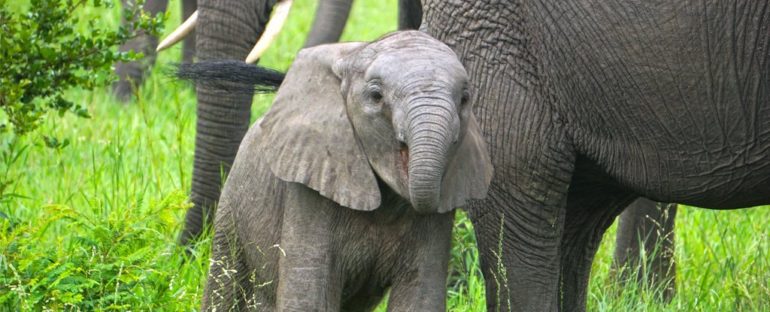For Thai rescue worker Mana Srivate, performing resuscitation has been part of his job for 26 years. A few days ago, things went down a little differently – he achieved his first successful resuscitation of a baby elephant.
“When the baby elephant [started] to move, I almost cried,” Mana told Reuters.
The young Indian elephant (Elephas maximus indicus) was hit by a motorcycle while trying to cross a road in the eastern Thai province of Chanthaburi.
Using his knowledge of human cardiopulmonary resuscitation (CPR) Mana was able to work out where the elephant’s heart was based on a clip he’d seen online. A dramatic viral video shows him performing two-handed compressions on the baby elephant as it lay knocked out on its side.
“It’s hard to tell if it’s actually stopped breathing prior to the responder doing chest compressions but it does appear to be in shock,” veterinarian Jaclyn Gatt, director of the Bird and Exotic Animal Clinic in Australia, told ScienceAlert.
“Trauma that causes you to collapse like that may cause bleeding into the chest or abdomen, and the sudden loss of blood internally would drop the blood pressure and potentially slow or stop the heart.”
The extraordinary moment a baby elephant is revived using CPR after being hit by a motorbike in Thailandhttps://t.co/sB8bB3JxJg pic.twitter.com/2DVESdyNDL
— BBC News (World) (@BBCWorld) December 22, 2020
Just as in human emergency medicine, CPR is a common practice in the world of veterinary medicine. You can take online classes for CPR for pet cats and dogs and it can also be performed on many other species too, from alligators to baby tapirs.
“I’ve done CPR on lots of species; dogs, cats, rabbits, ferrets, birds, rats, turtles, lizards and even fish,” said Gatt.
“CPR is a process to help make the heart keep ‘beating’ with chest compressions, get breaths in for air and ultimately keep the brain alive since it will die without oxygen. If a person or animal’s heart stops or they can’t breathe, CPR may help save their life until things start again on their own or medical intervention (drugs and machines) can take over.”
But reviving an elephant is not something those trained in human CPR usually find themselves doing.
Gatt explains that the major differences between performing CPR for animals and humans include where the compressions are done and how hard to press. In animals, chances of recovery are often dependent on the cause of cardiac arrest – animals that were sick before the arrest can be much harder to revive than those who have suffered recent trauma.
“There are specialist emergency and critical care (ECC) veterinarians, nurses and hospitals that are experts in this area, but all veterinary teams can and will perform CPR if our patients need it,” Gatt said.
And indeed, veterinary staff have continued to do just that, regularly saving the lives of our beloved pets and the world’s amazing wildlife even amid the risks, disruptions and terrible stresses of the pandemic.
“It’s my instinct to save lives, but I was worried the whole time because I can hear the mother and other elephants calling for the baby,” Mana told Reuters.
Despite the possible danger from the elephant’s larger relatives, Mana persisted in his valiant efforts and after about 10 minutes the youngster was able to pull itself up with a little help. Luckily the motorcycle driver, who was treated nearby, had no serious injuries.
“If the elephant’s body is in shock, then it’s possible that the chest compressions helped to get the blood circulating again and also force air through the lungs until its brain got enough blood supply (and vital oxygen) to bring it back to a conscious state,” said Gatt.
In the end, the elephant survived the ordeal, making it the feel-good story of these final weeks in 2020.
After further treatment at another location, Reuters reports the baby elephant was returned to the original scene of the accident, where its cries attracted the attention of its family. They were reunited.



